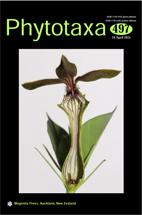Abstract
The genus Similisinocarum Cauwet & Farille (Apiaceae, Apioideae), was first described by Cauwet & Farille in 1984, but it has been considered as a synonym of Sinocarum H.Wolff ex R.H. Shan & F.T. Pu. In this study, Simlisinocarum normanianum, the type species of Similisinocarum was found in China for the first time, and the molecular phylogenetic evidence based on ITS sequences reveals that Similisinocarum normanianum occupies an individual clade, which is sister to the clade comprising seven species of Acronema, Sinocarum, and Oreocomopsis in Acronema clade, the values of genetic distances (ITS) between Similisinocarum and Acronema, Similisinocarum and Oreocomopsis, Similisinocarum and Pternopetalum, Similisinocarum and Sinocarum are close (≥0.0916), while deviated from the values within Acronema, Sinocarum and Pternopetalum (≤0.0580). Morphologically, we found Similisinocarum normanianum develops reflex bracteoles with white membranous margin, petals with an entire margin and incurved apex, and mericarps with many vittae in the furrow (≥ 3) and commissure (6), which are distinguishable from other species of the Acronema clade. Consequently, results manifested in molecular and morphological analyses indicate that Similisinocarum should be treated as an independent genus distinct from Sinocarum.

